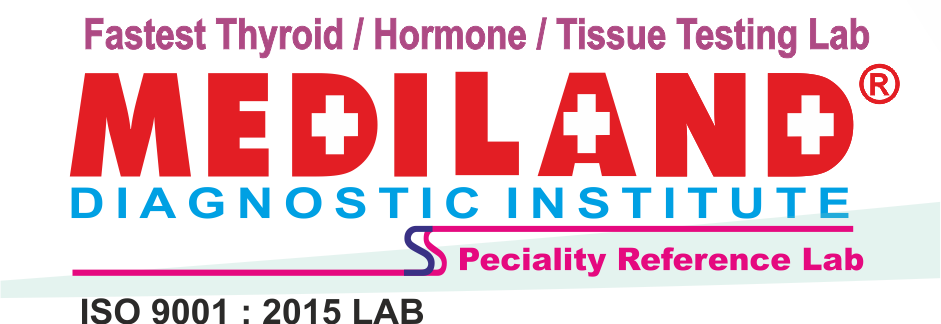Lung Function Test
At Mediland Diagnostic Institute we provide the best and the most put-together Lung Functioning Tests. Lung function tests also called pulmonary (PULL-mun-ary) function tests, measure how well your lungs work. These tests are used to look for the cause of breathing problems, such as shortness of breath

What Are Lung Function Tests?
Lung function tests also called pulmonary (PULL-mun-ary) function tests, measure how well your lungs work. These tests are used to look for the cause of breathing problems, such as shortness of breath
Types of Lung Function Tests
Breathing Tests (Spirometry)
Spirometry measures how much air you breathe in and out and how fast you blow it out. This is measured in two ways: peak expiratory flow rate (PEFR) and forced expiratory volume in 1 second (FEV1).
PEFR is the fastest rate at which you can blow air out of your lungs. FEV1 refers to the amount of air you can blow out in 1 second.
During the test, a technician will ask you to take a deep breath in. Then, you’ll blow as hard as you can into a tube connected to a small machine. The machine is called a spirometer.
Lung Volume Measurement
Body plethysmography (pleth-iz-MOG-re-fe) is a test that measures how much air is present in your lungs when you take a deep breath. It also measures how much air remains in your lungs after you breathe out fully.
During the test, you sit inside a glass booth and breathe into a tube that’s attached to a computer.
For other lung function tests, you might breathe in nitrogen or helium gas and then blow it out. The gas you breathe out is measured to show how much air your lungs can hold.
Lung volume measurement can help diagnose pulmonary fibrosis or a stiff or weak chest wall.
Lung Diffusion Capacity
This test measures how well oxygen passes from your lungs to your bloodstream. During this test, you breathe in a type of gas through a tube. You hold your breath for a brief moment and then blow out the gas.
Abnormal test results may suggest the loss of lung tissue, emphysema (a type of COPD), very bad scarring of the lung tissue, or problems with blood flow through the body’s arteries.
Tests To Measure Oxygen Level
Pulse oximetry and arterial blood gas tests show how much oxygen is in your blood. During pulse oximetry, a small sensor is attached to your finger or ear. The sensor uses light to estimate how much oxygen is in your blood. This test is painless and no needles are used.
For an arterial blood gas test, a blood sample is taken from an artery, usually in your wrist. The sample is sent to a laboratory, where its oxygen level is measured. You may feel some discomfort during an arterial blood gas test because a needle is used to take the blood sample
Testing in Infants and Young Children
Spirometry and other measures of lung function usually can be done for children older than 6 years, if they can follow directions well. Spirometry might be tried in children as young as 5 years. However, technicians who have special training with young children may need to do the testing.
Instead of spirometry, a growing number of medical centers measure respiratory system resistance. This is another way to test lung function in young children.
The child wears nose clips and has his or her cheeks supported with an adult’s hands. The child breathes in and out quietly on a mouthpiece, while the technician measures changes in pressure at the mouth. During these lung function tests; parents can help comfort their children and encourage them to cooperate.
Very young children (younger than 2 years) may need an infant lung function test. This requires special equipment and medical staff. This type of test is available only at a few medical centers.
The doctor gives the child medicine to help him or her sleep through the test. A technician places a mask over the child’s nose and mouth and a vest around the child’s chest.
The mask and vest are attached to a lung function machine. The machine gently pushes air into the child’s lungs through the mask. As the child exhales, the vest slightly squeezes his or her chest. This helps push more air out of the lungs. The exhaled air is then measured.
In children younger than 5 years, doctors likely will use signs and symptoms, medical history, and a physical exam to diagnose lung problems.
Doctors can use pulse oximetry and arterial blood gas tests for children of all ages.
